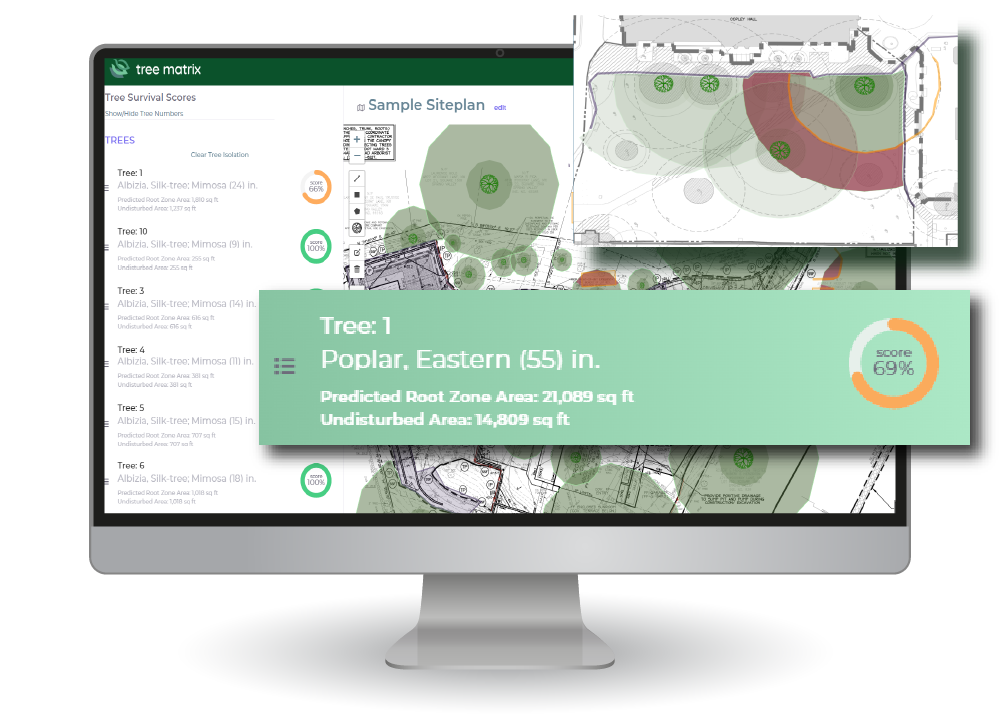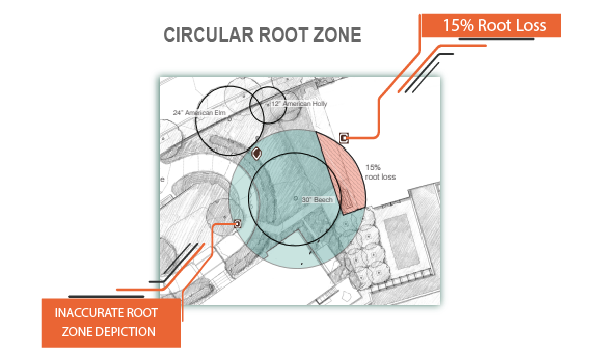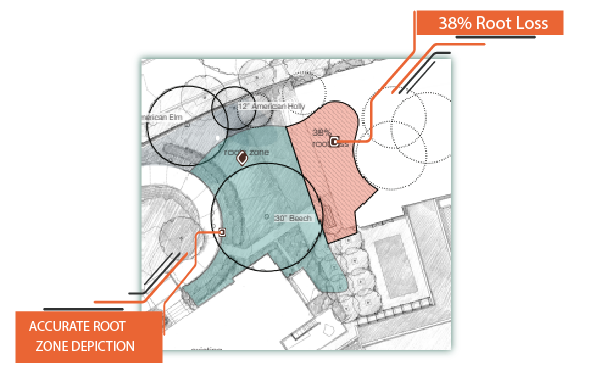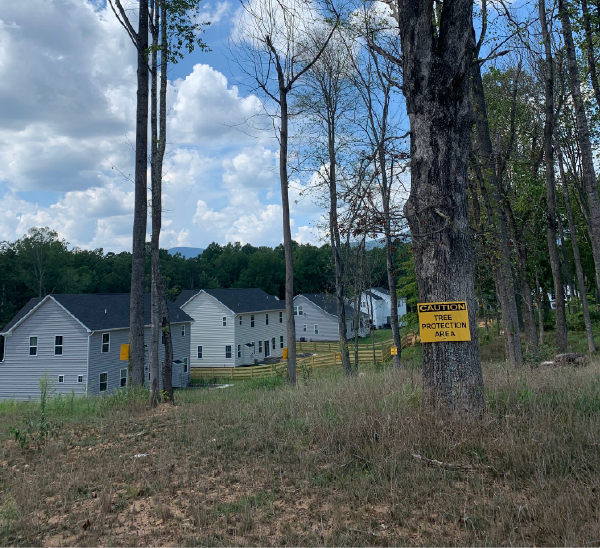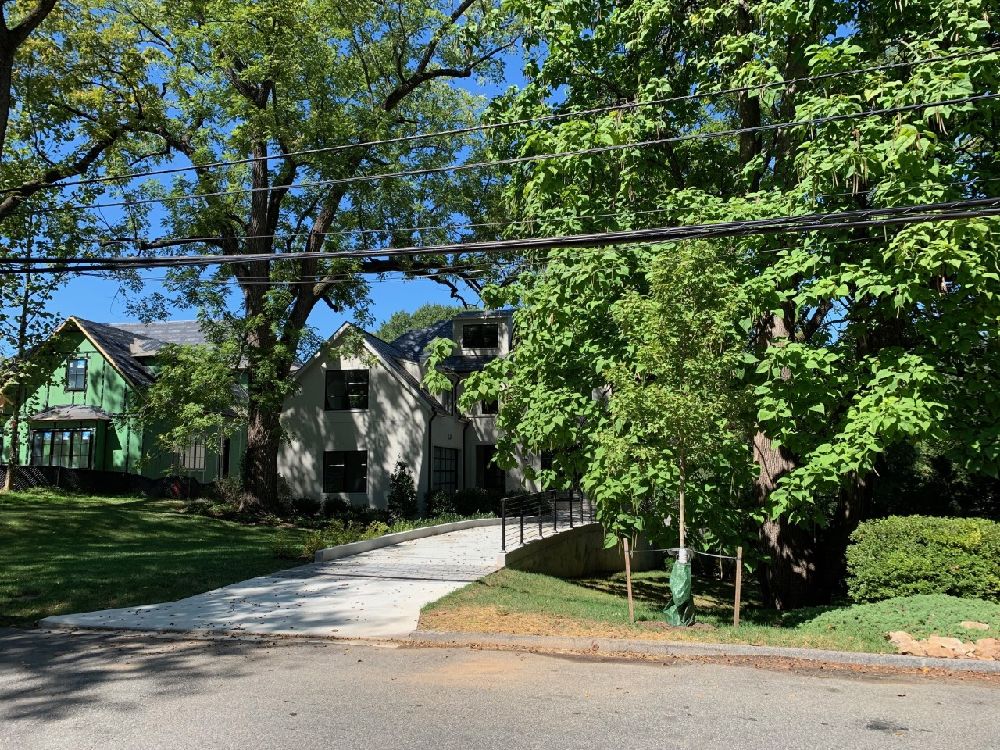Critical root zone (CRZ) is a term often used to identify the anticipated full extent of a tree’s root system. At Tree Matrix, we depict this zone by using a formula derived from research published by Susan D. Day, et al. (Arboriculture & Urban Forestry, 2010. 36(4):149-159). We feel that this formula provides the best depiction of root expansion for trees of many sizes and species.
Our ‘Root Plotter’ software depicts the CRZ based on this formula, and in response to boundaries that are likely to deflect root growth. Existing boundaries include structures on deep footings (>30”depth) such as buildings, retaining or privacy walls, or roadways with substrates compacted to a Proctor density of 95%, or greater. If a user does not agree with our depiction, they can manually adjust the CRZ. Adjustments can be made to accommodate for trees on slopes, the existence of features such as wet soils or to reflect species characteristics.
Once trees and their characteristics are added, and the limits of disturbance shown, a survival score is produced. The rooting area that remains is then determined to be the Tree Protection Zone (TPZ). The advantage of the Tree Matrix approach is that we provide a TPZ with a survival score. This is the level of certainty that a practitioner needs in order to then prepare a tree preservation plan.
At its core, tree preservation relies on determining the likelihood that a tree will survive the impacts of construction or development. Unless we can best approximate the spread of a tree’s root system, it is difficult to determine whether a tree will survive root loss. And while nuances of root expansion cannot be anticipated, our formula is conservative, sound and widely accepted by tree protection practitioners.
A tree protection zone (TPZ) is defined within the most current industry best management practices (BMP) as a “defined area within which certain activities are prohibited or restricted to prevent or minimize potential injury to designated trees, especially during construction or development.” Within these BMP’s, there are three different definitions of a TPZ.
At Tree Matrix, we feel that all of these definitions are unscientific and fall well short of what is needed in tree preservation – a calculation of tree survival based on a host of parameters that will determine tree survival. We define the TPZ as the area of root system that is preserved and which is based on the development plans, and in consultation with the project arborist. The difference between Tree Matrix and the BMP’s is that we provide users with a percent likelihood of survival for each tree impacted.
Root protection areas (RPA) are defined in the British Standards (BS-5837) only. They read quite similar to the CRZ definition.
Structural root zone (SRZ) refers to the plate like area around a tree containing the larger diameter roots whose function includes both structural support and transportation of water and photosynthates. This zone is also called the ‘root plate’ or ‘zone of rapid taper.’
We add quantitative definition and survival percentages to the CRZ, TPZ and SRZ because this approach adds certainty to tree preservation planning! Tree preservation, in concert with tree planting, are the foundations of urban forest canopy enhancement. In order to help stem the worst impacts of climate change, we must protect larger, existing trees where much of the pollution is produced. That is in the urban and suburban settings. The arboricultural industry should not limit tree preservation planning only to those with decades of experience but should expand the ranks of practitioners by providing technology to produce tree preservation plans more accurately. Tree Matrix provides this technology.

